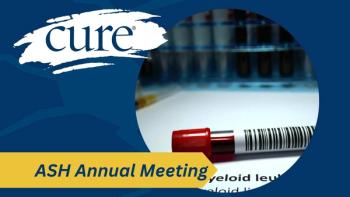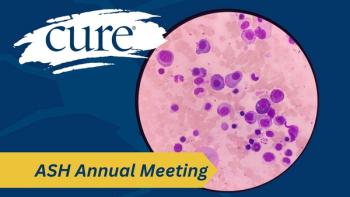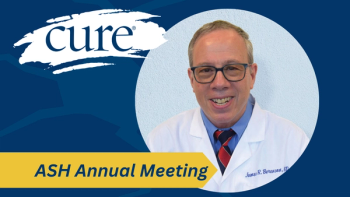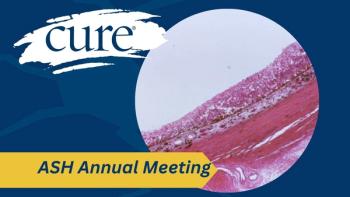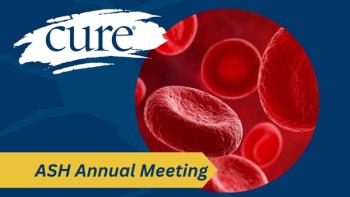
Exploring the Use of Tumor Treating Fields in Grade 3 Brain Cancer
Though now used for patients with grade 4 brain tumors, tumor treating fields are being tested for use in grade 3 tumors.
An upcoming trial is testing the use of tumor treating fields (TTFields) for the grade 3 patient population. So far, the treatment method has been largely focused on glioblastoma, says Daniel O’Connell, M.D.
Currently, the device is only FDA approved for use in grade 4 brain tumors, but O’Connell, a neuro-oncologist at UCLA’s David Geffen School of Medicine, anticipates the FDA will grant its approval for use in grade 3 tumors within the next two to three months.
What impact have TTfields made so far in brain cancer, and what do you envision the future use will be?
In an interview with CURE, O’Connell discusses the upcoming trial, which will test the efficacy of TTFields in these patients, as well as the impact the device has already made in the grade 4 patient population.The first trial in humans for TTFields in the brain tumor community was for glioblastoma, and the focus has thus far been largely on glioblastoma, for obvious reasons. Glioblastoma carries the most devastating prognosis, median survival times are the shortest, and it is the highest-grade glioma. Therefore, the focus has been on that.
Increasingly, there has been a buildup of evidence in favor of the use of TTFields in improving the side effect profile relative to standard chemotherapies, or at least not making it worse. With regards to outcomes such as survival times, there has increasingly been more evidence mounting in favor of prolonged survival with the device. However, this has not been used beyond the grade 4 domain. I did see some additional posters at this meeting regarding the use of TTFields in meningioma, and I know in the lung cancer world there are some works in progress regarding TTFields. However, for the grade 3 tumors, that is our focus.
What is the time frame for this trial?
Currently, this device is only FDA approved for grade 4 tumors, so we anticipate the FDA approval for the device for grade III tumors in the next two to three months—I can’t see a reason why this would not go through. And then we will obtain approval to finally start enrolling patients in the trial, which we have received funding for. It is a phase 2 study demonstrating the use of TTFields in grade 3 anaplastic astrocytoma population.Great question. It’s going to be some time, because the grade 3 patients have a better prognosis; they live longer. Proportionally, there are fewer of them. There are proportionally more glioblastoma patients amongst the patients with glioma. There is not as big of a patient population.
Is this trial a next step to the EF-14 trial?
Our catchment area is within Southern California—Orange County community hospitals, and we hope to recruit folks in LA County, as well. Our minimum goal of recruitment is 26 patients, with up to 36 allotted. We anticipate this trial lasting years, because these patients, regardless of therapies, typically live a median survival of five to nine years. The use of this will hopefully push us over to that nine-year mark and beyond—that’s our hope, of course, for these patients. So this will be a long-standing trial running through, I anticipate, 2018, 2019, 2020. It will take some time.You can view this trial as an additional step moving beyond the EF-14 trial, which is quite a landmark trial. Finally, we’re seeing a significant difference on multiple levels for the Optune device for TTFields.
We started with EF-11, which demonstrated against physician’s choice chemotherapy and TTFields that TTFields provide the same overall benefit in addition to not having the side effects of chemotherapy. EF-14 has now demonstrated that, in tandem with the chemotherapy, that patients do better with the TTFields clearly, and this is also stratified by subgroups and hazard ratios, etc.
What impact could this device have for patients?
Our plan is to take this another step, as it appears some other folks are actively pursuing, and extending it to the grade III patients. Who’s to say that there may be an even more demonstrable benefit in the grade 3 population. It will take a lot of time to tell. It takes time for the TTFields to work in and of themselves—a couple months, so in order to see that result, you have to start earlier rather than later, which is our goal to help offset and utilize the cytostatic mechanism of TTFields to prevent the cell population from further dividing tumor cells.One of the big questions we get in our clinic at UCLA is, what other modalities can be used to help offset the devastating nature of glioma, particularly glioblastoma? Increasingly, our grade 3 patients, our young grade 3 patients, are curious as well. They go online and look and see what the average prognosis, etc. is for patients with their diagnosis. They want to know what else can be done. This is a different modality than immunotherapy, targeted therapy, and traditional chemotherapy, in that it utilizes a novel mechanism. It is not ionizing radiation, it is distinct from radiation therapy, although sometimes comparisons are made from a trial standpoint. It’s different, and it can be used differently.
I saw a fascinating poster the other night about attempting to use TTFields with radiation therapy, which initiates usually for most patients shortly after resection (should they have a resection; most do). In order to push it back further, and that would apply not only to the glioblastoma patients, for which the EF-11 and EF-14 trials have been designed and used for, but also for our patient population that we’re interested in — the grade 3 — to see if it can start early. Believe it or not, there are quite a few patients that are very proactive, that even with a prognosis that is fairly good compared with the glioblastoma group, still want everything done, understandably. They’re looking into the future and they want to do something as soon as possible. This is a mechanism of action that can be used for them.

